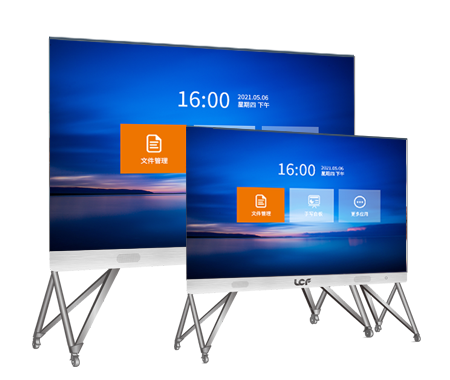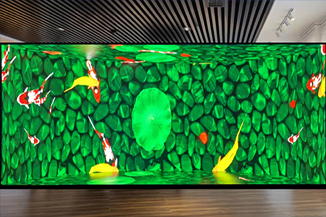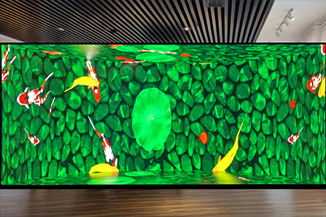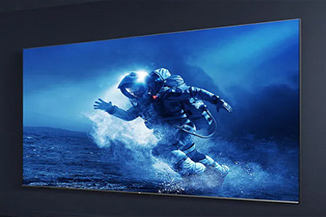Publisher: Supplier of LED Display Time: 2022-02-14 17:04 Views: 2706
LED display is more and more widely used, we will encounter some display failure problems more or less in the process of use. When the problem occurs, how do we know where the fault is? How to solve it? Here, the editor of LCF will give you a simple analysis of these two problems.
1. Analysis of common faults of LED display
The most direct and effective method for beginners to analyze the failure of led display screen is the elimination method. The display screen is mainly composed of three hardware components: control card, unit board, and switching power supply.
First of all: We judge whether the control card is good or not. You first turn on the power and check whether the indicator light of the control card is lit. If it is not lit, check whether there is 5V power supply and whether the display screen can display the content, as long as the content can be displayed. , indicating that the function of the display content of the control card is good; then you use the control card software to find the control card, if you can find it, it means that the function of sending the content of the control card is good, if you can't find it, check if the communication line has any If it is connected, there may be a problem with the card. As long as these two functions are good, the control card is good, otherwise the control card should be replaced.
Secondly; we have to judge whether the power supply is good or not. If the power supply is broken, it will directly cause several boards not to light up or be abnormal at the same time, because one power supply controls several boards at the same time, that is, if your display screen It is that several boards in the same small area do not display or display abnormally. You should consider whether the power supply is broken. The most direct detection method is to measure whether the output voltage is between 4.9~5.5V with the DC voltage range of the multimeter. If so, replace the power supply.
Finally: we have to judge whether the unit board is good or not. The signal of the LED full-color display screen is transmitted from the output pin header of one unit board to the input signal of another board, so there is a problem with one board, which will cause the whole row behind it to fail. Bright or abnormal, so when there is a problem with one row of the display screen, we should replace the board that started abnormally in this row, or jump over this board with a long cable, and then see if the board behind it is normal. .
After these three steps of fault analysis, it is basically possible to determine where the fault of the LED display screen occurs, and at the same time, it also lays a good foundation for providing a feasible solution to the fault of the LED display screen.

2, LED display common fault solutions
Knowing the fault location, users can solve it by themselves if they have certain maintenance knowledge, which effectively saves time and maintenance costs. Below is a summary of the solutions to some common faults.
Problem with output:
(1) Detect whether the line from the output interface to the signal output IC is connected or short-circuited;
(2) Check whether the clock latch signal of the output port is normal;
(3) Detect whether the cascaded output data port between the last driver IC is connected with the data port of the output interface or is short-circuited;
(4) Whether the output signals are short-circuited to each other or short-circuited to the ground;
(5) Check whether the output cable is good.
When all lights are on, one or several lines do not light up: Check whether the lines between 138 and 4953 are open or soldered or short-circuited.
The whole board does not light up:
(1) Check whether the power supply and the signal line are connected;
(2) Check whether the test card can identify the interface, if the red light of the test card is flashing, it is not recognized. Check whether the light board and the test card have the same power ground, or the interface of the light board has a short circuit between the signal and the ground, so that the interface cannot be recognized. (Smart Test Card);
(3) Detect whether the 74HC245 is short-circuited by soldering, and whether the corresponding enable (EN) signal input and output pins on the 245 are soldered or short-circuited to other circuits. Note: Mainly check the power supply and enable (EN) signal.
During the point-and-slope scan, the regular interlaced unlit display screen overlaps:
(1) Check whether there is any disconnection or virtual welding or short circuit between the A, B, C, D signal input ports to 245;
(2) Detect whether the A, B, C, D output terminals corresponding to 245 and 138 are open or soldered or short-circuited;
(3) Detect whether the signals of A, B, C, and D are short-circuited or whether a signal is short-circuited with the ground. Note: Mainly detect ABCD line signal.
The display is confusing, but the signal output to the next board is normal: Check whether the STB latch output terminal corresponding to 245 is connected to the latch terminal of the driver IC or the signal is short-circuited to other lines.
When all lights are on, one or several columns are off: Find the pin on the module that controls the column, and test whether it is connected to the output end of the driver IC (74HC595/TB62726,,,).
There is single point or single column highlighting, or whole row highlighting, and not controlled :
(1) Check whether the column is short-circuited with the power ground;
(2) Detect whether the line is short-circuited with the positive pole of the power supply;
(3) Replace its driver IC.
The display is messed up and the output is not normal :
(1) Detect whether the clock CLK latches the STB signal for short circuit;
(2) Detect whether the clock CLK of 245 has input and output;
(3) Detect whether the clock signal is short-circuited to other lines. Note: Mainly detect clock and latch signals.
Display lack of color:
(1) Detect whether the data terminal of the color of 245 has input and output;
(2) Detect whether the data signal of the color is short-circuited to other lines;
(3) Detect whether the cascaded data ports between the driver ICs of the color have an open circuit, a short circuit, or a virtual soldering. Note: It is easier to find the problem by using the voltage detection method, check whether the voltage of the data port is different from the normal one, and determine the fault area.
When it is fully lit, there is a single point or multiple points (irregular) that do not light up:
(1) Find out whether the corresponding control pin of the module is short-circuited with the bank;
(2) Replace the module or single lamp.
During line scanning, two or more lines (usually a multiple of 2, regularly) are lit at the same time:
(1) Detect whether there is a short circuit between the signals A, B, C, and D;
(2) Detect whether the output terminal of 4953 is short-circuited with other output terminals.
All LEDs are off: the main power is not turned on; some LEDs are off: the polarity of the output wiring of the switching power supply is reversed or the module wiring is disconnected.
All LEDs are dim: too many load LEDs or module polarity is reversed; some LEDs are dim and lamp beads are hot: module wiring is short-circuited; LED brightness is inconsistent: too many load LEDs.









